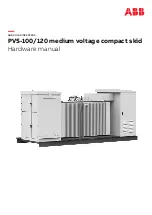
8
• Install and maintain equipment according to
NEC code, refer to item 4 in Subsection 1.03,
Publications.
• Disconnect power source before performing
any service or repairs.
• Read and follow all the instructions in the
Operating Manual.
FIRE AND EXPLOSION
Fire and explosion can be caused by hot slag,
sparks, or the arc weld.
• Be sure there is no combustible or flammable
material in the workplace. Any material that
cannot be removed must be protected.
• Ventilate all flammable or explosive vapors
from the workplace.
• Do not cut or weld on containers that may
have held combustibles.
• Provide a fire watch when working in an
area where fire hazards may exist.
• Hydrogen gas may be formed and trapped
under aluminum workpieces when they are
cut underwater or while using a water table.
DO NOT
cut aluminum alloys underwater
or on a water table unless the hydrogen gas
can be eliminated or dissipated. Trapped
hydrogen gas that is ignited will cause an
explosion.
NOISE
Noise can cause permanent hearing loss. Arc
welding/cutting processes can cause noise levels
to exceed safe limits. You must protect your ears
from loud noise to prevent permanent loss of
hearing.
• To protect your hearing from loud noise,
wear protective ear plugs and/or ear muffs.
Protect others in the workplace.
• Noise levels should be measured to be sure
the decibels (sound) do not exceed safe
levels.
• For information on how to test for noise, see
item 1 in Subsection 1.03, Publications, in
this manual.
ARC WELDING RAYS
Arc Welding/Cutting Rays can injure your eyes
and burn your skin. The arc welding/cutting
process produces very bright ultra violet and infra
red light. These arc rays will damage your eyes
and burn your skin if you are not properly
protected.
• To protect your eyes, always wear a welding
helmet or shield. Also always wear safety
glasses with side shields, goggles or other
protective eye wear.
• Wear welding gloves and suitable clothing to
protect your skin from the arc rays and
sparks.
• Keep helmet and safety glasses in good
condition. Replace lenses when cracked,
chipped or dirty.
• Protect others in the work area from the arc
rays. Use protective booths, screens or
shields.
• Use the shade of lens as recommended in
Subsection 1.03, item 4.
1.03 Publications
Refer to the following standards or their latest
revisions for more information:
1. OSHA, SAFETY AND HEALTH STANDARDS,
29CFR 1910, obtainable from the
Superintendent of Documents, U.S.
Government Printing Office, Washington, D.C.
20402
2. ANSI Standard Z49.1, SAFETY IN WELDING
AND CUTTING, obtainable from the American
Welding Society, 550 N.W. LeJeune Rd, Miami,
FL 33126
3. NIOSH, SAFETY AND HEALTH IN ARC
WELDING AND GAS WELDING AND
CUTTING, obtainable from the Superintendent
of Documents, U.S. Government Printing
Office, Washington, D.C. 20402
4. ANSI Standard Z87.1, SAFE PRACTICES FOR
OCCUPATION AND EDUCATIONAL EYE
AND FACE PROTECTION, obtainable from
American National Standards Institute, 1430
Broadway, New York, NY 10018
5. ANSI Standard Z41.1, STANDARD FOR MEN’S
SAFETY-TOE FOOTWEAR, obtainable from
the American National Standards Institute,
1430 Broadway, New York, NY 10018
Содержание 250TS DC CC
Страница 2: ......
Страница 4: ...4 PAGE LEFT INTENTIONALLY BLANK ...
Страница 22: ...22 PAGE LEFT INTENTIONALLY BLANK ...
Страница 54: ...54 APPENDIX A INTERCONNECT DIAGRAM ...
Страница 55: ...55 ...
Страница 57: ...57 Figure 11 Location of PCB WK 4921 ...









































